Enhancing Intervention Outcomes with Preference Assessments
Introduction to Prompt Hierarchy in ABA
Understanding the structure and application of prompt hierarchy is fundamental for effective behavior analysis. This approach systematically guides learners through skill acquisition by providing supports that are gradually reduced, fostering independence and skill retention. The concept is rooted in ABA principles of errorless learning and prompt fading, critical for promoting generalization and reducing prompt dependence. This article delves into the components, organization, techniques, and significance of prompt hierarchy in ABA therapy.
Fundamentals of Prompts in ABA
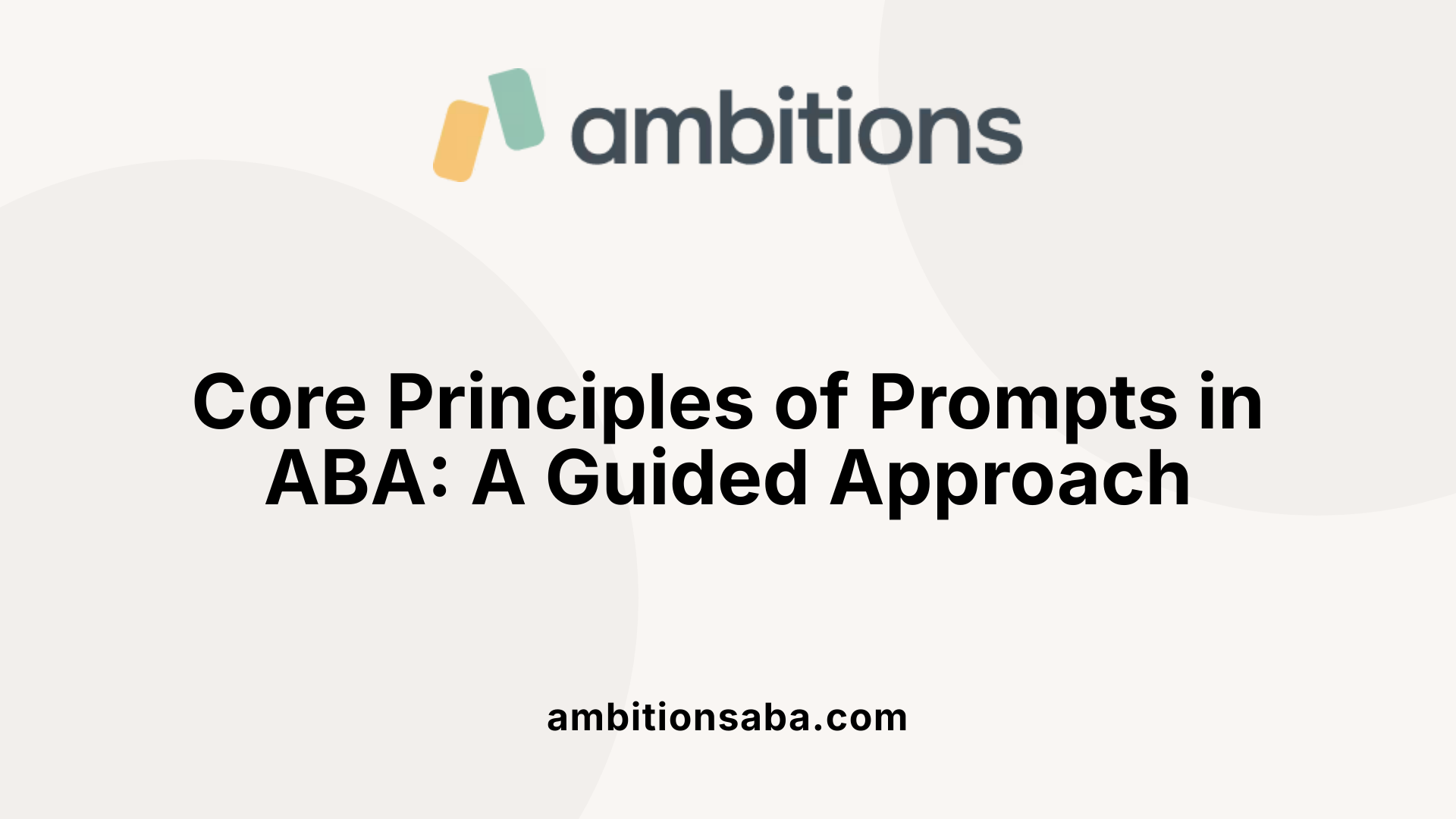
What are prompts in ABA?
In Applied Behavior Analysis (ABA), prompts are cues or assistance provided before a learner responds to guide them towards the correct behavior or response. These prompts serve as temporary supports that help individuals execute new skills, especially when they are initially learning or when they need extra guidance to respond appropriately.
Role of prompts in learning and behavior shaping
Prompts play a crucial role in promoting errorless learning, a teaching method that minimizes mistakes during skill acquisition. By providing the right prompts at the right time, educators can help learners respond correctly, which builds confidence and creates positive learning experiences. Over time, prompts are gradually faded to encourage the learner's independent responses.
Errorless learning principle
A fundamental concept tied to prompting is errorless learning. This approach involves delivering prompts in a way that almost guarantees correct responses, reducing frustration and promoting mastery. Systematic fading of prompts ensures learners become less dependent on cues, fostering greater independence and skill generalization.
Common examples of prompt hierarchy in ABA
In practice, prompt hierarchy includes various levels of assistance arranged from most to least intrusive. Examples include physical prompts, such as full and partial physical guidance; verbal prompts, like full or phonemic cues; and visual prompts, such as modeling or visual aids. The hierarchy begins with the most supportive prompts and progressively moves toward less intrusive cues. Techniques like most-to-least prompting, least-to-most prompting, and time delay techniques are utilized to fade prompts systematically. Each level is selected to match the learner's needs and the complexity of the task, promoting effective skill acquisition and independence.
Understanding and applying these prompting strategies help facilitate learning, promote independence, and reduce frustration, making ABA a powerful tool for teaching skills to individuals with diverse learning needs.
Structure and Types of Prompt Hierarchies
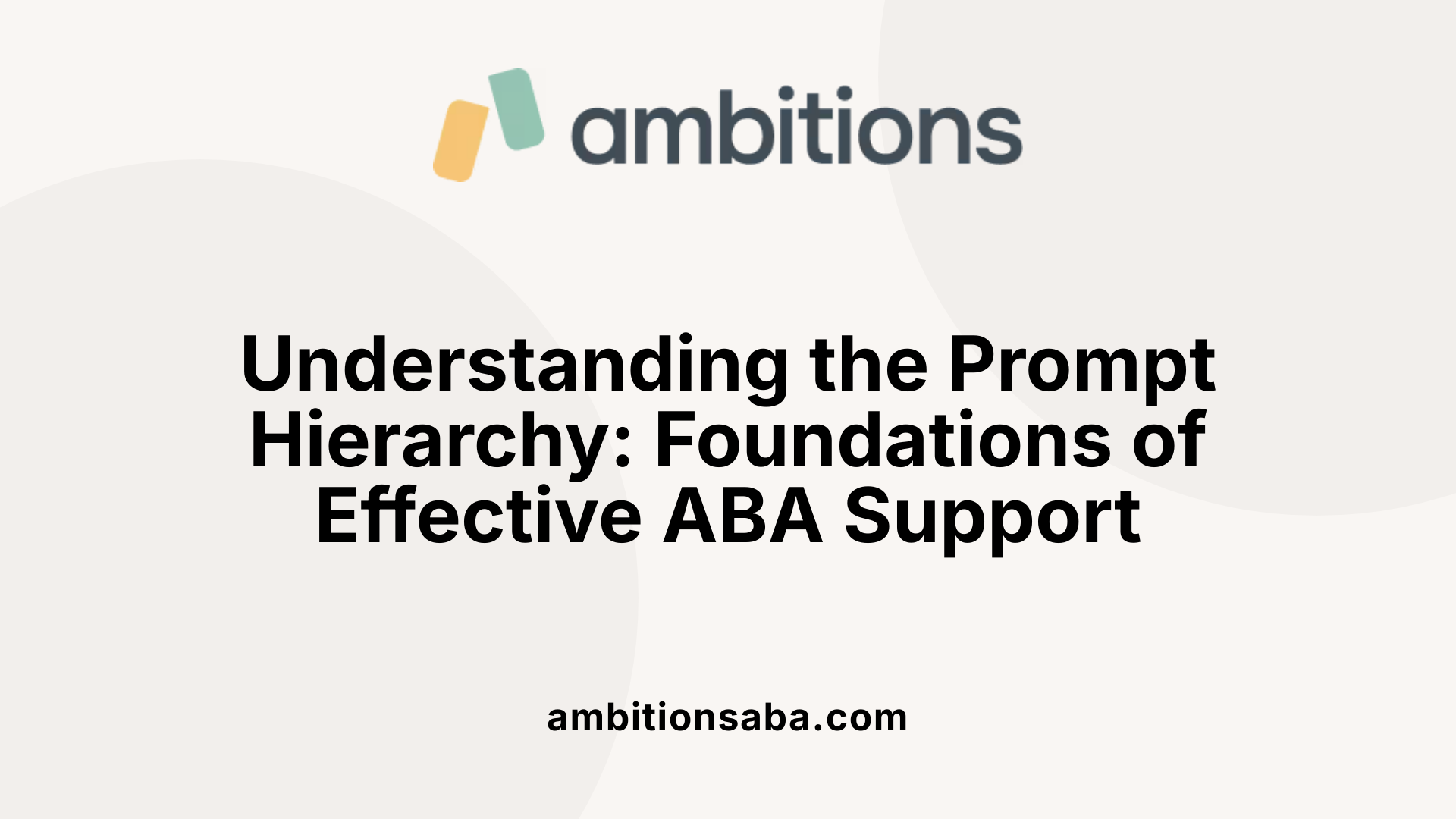
What is the prompt hierarchy in ABA therapy and its significance?
The prompt hierarchy in ABA therapy is a structured approach that organizes different support strategies from most to least intrusive, designed to help learners acquire new skills effectively. It systematically provides varying levels of assistance—starting with the most supportive prompts and gradually fading to less intrusive ones—to foster independence.
The hierarchy incorporates several types of prompts, such as physical, verbal, visual, gestural, and modeling prompts. Each type is used with different degrees of support, depending on the learner's needs. For example, physical prompts involve guiding or hand-over-hand assistance, while visual prompts might include pictures or cues placed within easy reach.
Implementing systematic prompting strategies like least-to-most and most-to-least prompting helps tailor support to individual progress. With least-to-most prompting, support begins at the minimal level and increases if necessary. Conversely, most-to-least prompting starts with maximum assistance and decreases as the learner’s skill improves.
Fading these prompts is crucial. It prevents prompt dependency, encourages learners to perform tasks independently, and aids in skill generalization across different environments. Data collection during this process ensures appropriate pacing in reducing prompts.
Overall, the significance of the prompt hierarchy lies in its ability to promote efficient learning, reduce frustration, and build lasting independence in learners, making it a foundational component of effective ABA interventions.
Strategic Approaches to Prompt Fading
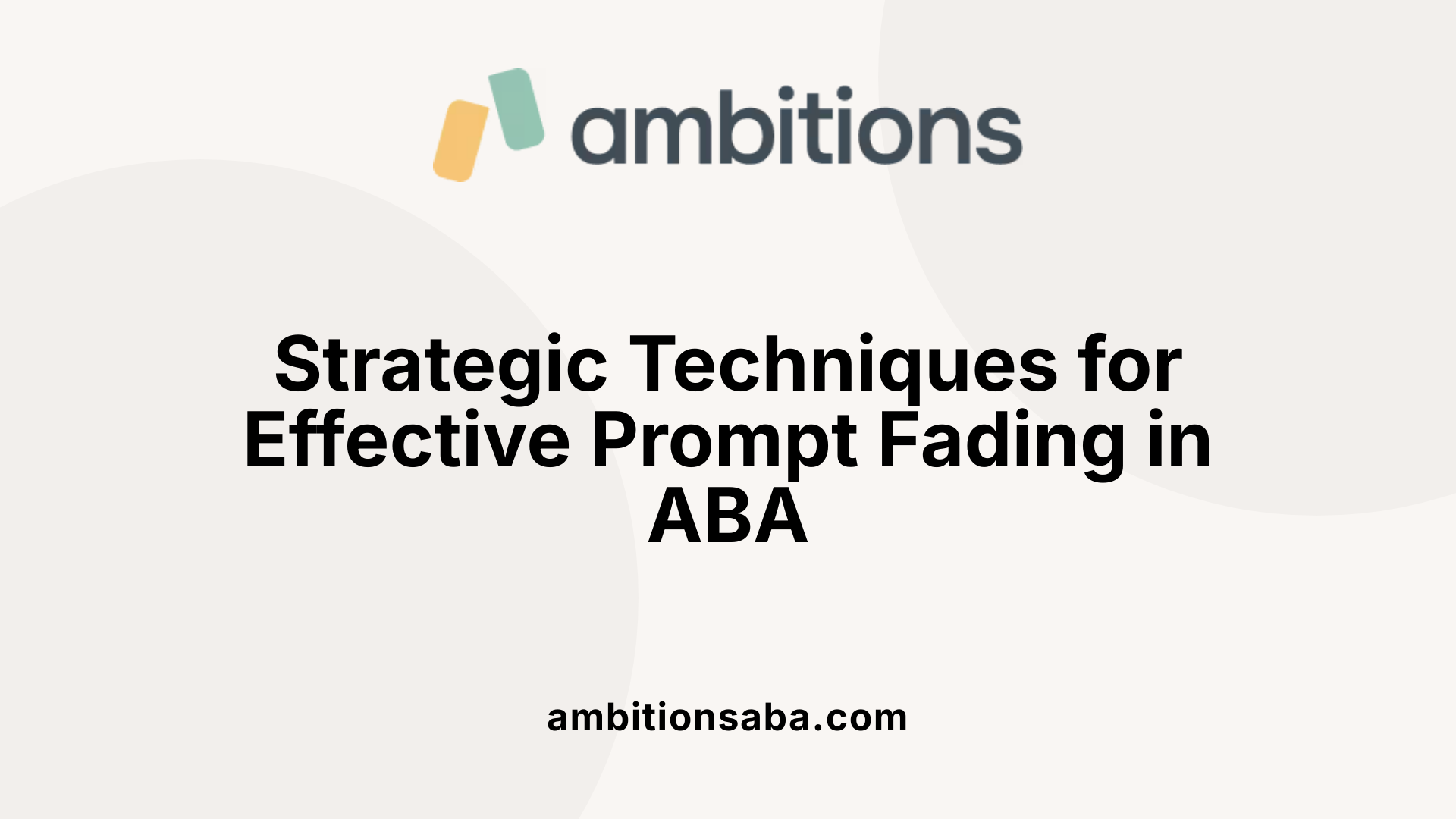
How does prompt fading work within the hierarchy in ABA interventions?
Prompt fading in ABA interventions is a systematic process that involves gradually reducing the amount of help provided to a learner to foster independence. It starts with the most direct and intrusive prompts, such as full physical assistance, and carefully transitions to less intrusive supports like modeling, gestural cues, or natural cues.
This process is carefully planned and monitored. Practitioners assess the learner’s response to each level of prompt and adjust accordingly. A predefined fading plan outlines specific steps and criteria, such as correct responses over a number of trials, before moving to the next level of less assistance.
Data collection plays a vital role in guiding prompt fading. By tracking the learner’s responses, instructors can determine whether the prompts are being faded appropriately or if adjustments are necessary.
Different fading techniques serve different goals. For example, the most-to-least method begins with maximum support and reduces assistance as the learner gains mastery. Conversely, the least-to-most technique starts with minimal prompts and introduces more assistance only if the learner is not successful.
Research indicates that systematic prompt fading enhances learning efficiency. Properly implemented fading strategies reduce prompt dependency, promote skill generalization, and support learners’ transition toward independent functioning. Choosing the right fading approach depends on individual needs, the complexity of the skill, and the learner’s responsiveness.
In sum, prompt fading within the hierarchy is essential for effective ABA therapy, ensuring that support is gradually withdrawn, and learner independence is maximized. A methodical, data-driven approach helps optimize outcomes and sustain skills acquired during intervention.
Implementation Strategies and Data Monitoring
How is the prompt hierarchy organized when teaching a new skill in ABA?
In ABA therapy, the prompt hierarchy is arranged from the most to the least intrusive prompts, creating a systematic framework for teaching new skills. This structured sequence begins with the most supportive prompts, such as full physical assistance, where the therapist might guide the learner's hand directly. From there, it moves towards less intrusive prompts, including modeling behaviors, gestural cues, verbal prompts, and finally visual prompts like pictures or positional cues.
The goal of this hierarchy is to provide just enough support to encourage correct responses initially and then systematically reduce assistance to foster independence. To do this effectively, therapists often use fading strategies such as most-to-least prompting—starting with maximum support and gradually decreasing it—or least-to-most prompting—beginning with minimal prompts and increasing support only if necessary.
This organized approach allows individualization based on the learner's responsiveness and needs. As the learner demonstrates mastery at each level, prompts are carefully faded away, promoting independent performance and skill generalization. The hierarchy not only ensures effective skill acquisition but also minimizes frustration and prompt dependency, key to fostering autonomous behaviors.
Promoting Independence and Skill Generalization
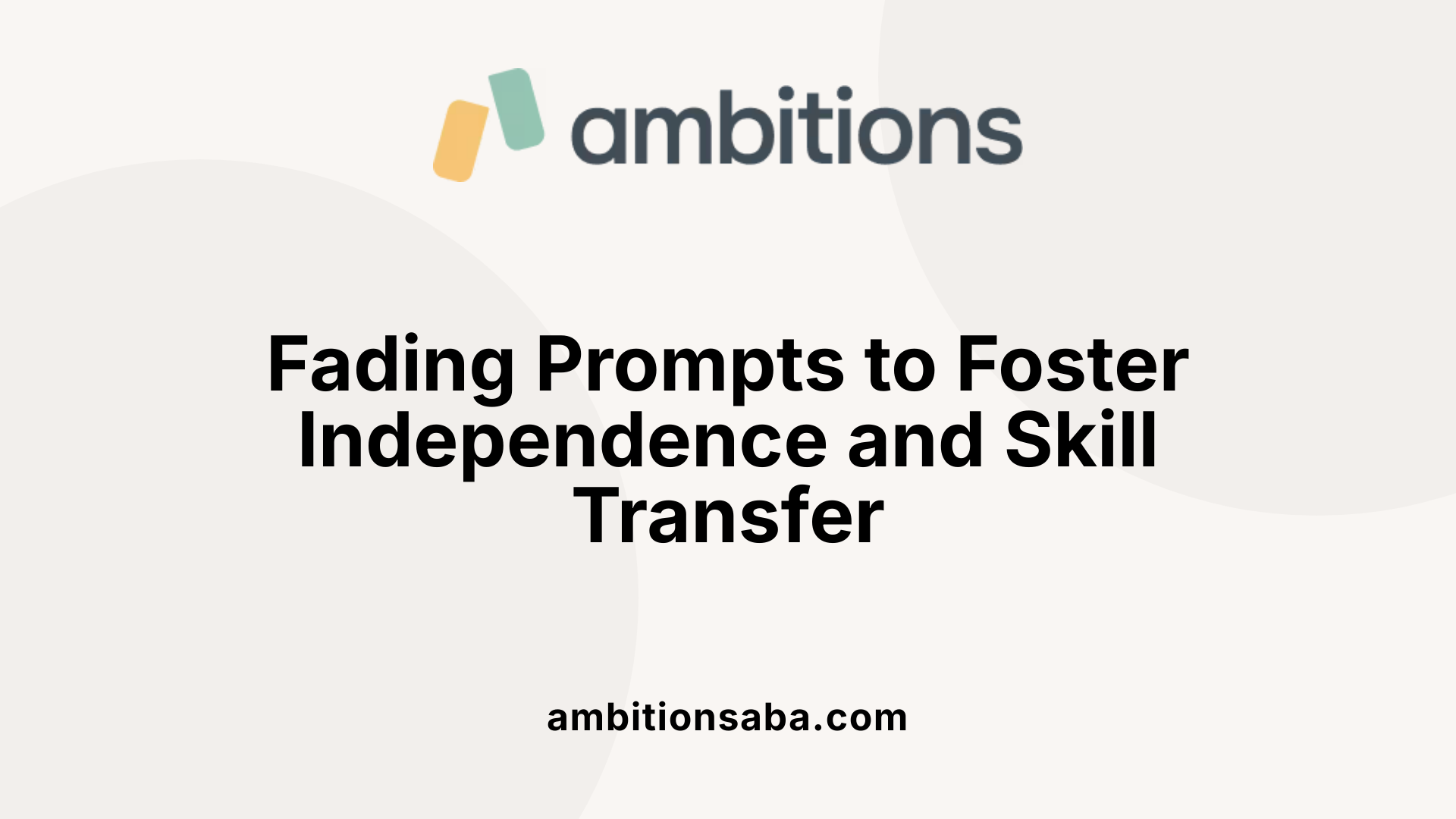
Fading prompts to promote independence
In ABA therapy, gradually reducing or fading prompts is crucial for encouraging learners to perform skills independently. Prompts should be introduced systematically, starting with the most intrusive assistance—such as full physical guidance—and then slowly diminishing in intensity. This process prevents prompt dependency, helping individuals develop confidence and self-reliance.
Different fading techniques can be used, including time delay methods, where the prompt is delayed gradually, and the systematic reduction in prompt level, such as moving from full physical to partial and then to no assistance at all. The goal is for the learner to respond correctly without prompts, demonstrating true mastery of the skill.
Supporting skill retention across settings
For skills to be retained and effectively used in various environments, consistent prompting and prompt fading strategies are essential across different settings. Caregivers, teachers, and therapists work together to implement the same prompt hierarchy and fading protocols, which facilitates skill generalization.
Using visual cues, modeling, or natural prompts allows learners to transfer skills to everyday situations, whether at home, school, or community settings. Regular practice with decreasing prompts enhances long-term retention and helps learners apply skills in real-world contexts.
The significance of systematic prompt fading
Systematic prompt fading is fundamental in ABA because it ensures a structured approach to skill development. It involves carefully monitoring the learner’s responses and gradually decreasing prompts based on collected data, making the process personalized and efficient.
Without a deliberate fading plan, learners may become prompt-dependent, which can limit their independence and generalization potential. Conversely, a well-structured fading process promotes autonomy and confidence, encouraging ongoing learning and skill transfer. Effective prompt fading thus acts as a bridge from guided assistance to independent performance, securing lasting skill mastery.
Advanced Techniques and Future Directions
 The integration of technology has opened new horizons in the application of prompt hierarchies in ABA. Digital prompts and Augmentative and Alternative Communication (AAC) devices are increasingly used to support learners. Digital prompts, including apps and interactive software, allow for customizable and immediate cues that can adapt to each learner's pace.
The integration of technology has opened new horizons in the application of prompt hierarchies in ABA. Digital prompts and Augmentative and Alternative Communication (AAC) devices are increasingly used to support learners. Digital prompts, including apps and interactive software, allow for customizable and immediate cues that can adapt to each learner's pace.
AAC devices help individuals with communication difficulties by providing visual and auditory prompts through specialized hardware or software. These tools enhance engagement and facilitate communication, making learning more accessible.
Emerging methods such as virtual reality (VR) and augmented reality (AR) are poised to revolutionize prompt applications. VR creates immersive environments where learners can practice skills in realistic settings with tailored prompts. AR overlays visual cues and prompts within real-world contexts, aiding learners in navigating complex tasks.
Interdisciplinary collaborations are essential for advancing personalized interventions. Combining expertise from psychology, speech therapy, occupational therapy, and technology fosters the development of innovative, individualized prompting strategies. These approaches aim to optimize learning efficiency, promote independence, and accommodate diverse learning needs.
Overall, the future of prompt hierarchies involves sophisticated, technology-supported strategies that are adaptable, engaging, and targeted to individual learner profiles. Continued research and collaboration will be critical in harnessing these innovations to improve intervention outcomes.
Resources and Practical Applications
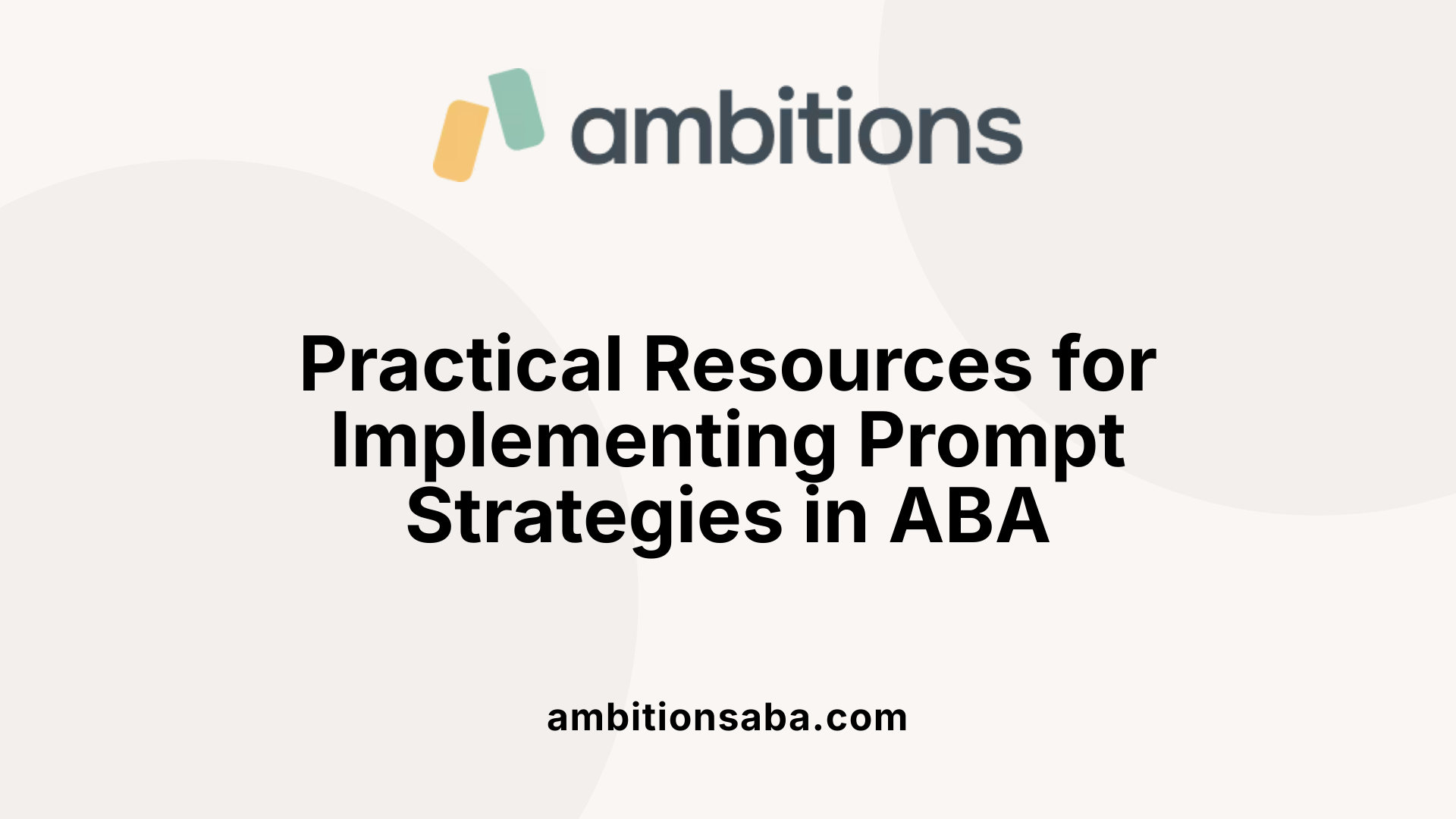 Finding worksheets and visual aids to understand and implement the ABA prompt hierarchy is essential for effective teaching and learning. Many online platforms dedicated to ABA education offer free or low-cost resources, including PDFs, manuals, flip books, and posters. These materials are designed specifically for educators, therapists, and parents working with learners with autism or other developmental challenges.
Finding worksheets and visual aids to understand and implement the ABA prompt hierarchy is essential for effective teaching and learning. Many online platforms dedicated to ABA education offer free or low-cost resources, including PDFs, manuals, flip books, and posters. These materials are designed specifically for educators, therapists, and parents working with learners with autism or other developmental challenges.
Such resources typically cover various prompt types—physical, verbal, visual—and detail strategies like least-to-most and most-to-least prompting, as well as prompt fading techniques. They are structured in a way that makes it easy to understand how to systematically introduce prompts and gradually promote independence.
Training for parents and educators is also widely available through online courses, workshops, and professional seminars. These programs focus on teaching the principles of prompt hierarchy, errorless learning, and data collection. By participating in these training avenues, caregivers and teachers learn how to tailor prompts to individual needs, implement strategies consistently, and monitor progress effectively.
Implementing the prompt hierarchy at home or in classroom settings involves a few key steps. First, assess the learner’s current skill level and determine the most appropriate starting point in the hierarchy. Use visual aids, cue cards, or demonstration models to support instruction. As the learner progresses, carefully fade prompts using techniques like time delay or graduated reduction of physical prompts.
Consistency across environments is crucial. Parents and teachers should collaborate and share resources to maintain a structured approach. Practical applications also include creating visual schedules, using digital prompts, and providing positive reinforcement to encourage independent responses.
In summary, accessible resources and structured training are vital for effectively applying the prompt hierarchy. With the right tools, caregivers and educators can foster skill development, promote independence, and reduce prompt dependence—paving the way for meaningful learning and growth.
Conclusion: Enhancing Learning Through Structured Support
The effective application of prompt hierarchy in ABA is vital for optimizing learning outcomes, fostering independent behavior, and ensuring the generalization of skills across various environments. By carefully selecting, implementing, and systematically fading prompts with data-driven decision-making, practitioners and caregivers can create a supportive learning framework that adapts to individual needs. Harnessing the principles outlined and utilizing available resources can significantly improve teaching efficacy, ultimately empowering learners to reach their full potential as confident, independent individuals.
References
- The Art of Prompting: A Guide to the Prompt Hierarchy in ABA
- Prompt Hierarchy in ABA: A New Perspective
- [PDF] PROMPT HIERARCHY
- Using the System of Least to Most Prompts | Nevada Dual Sensory ...
- Understanding ABA Prompts and Prompt Hierarchy - Motivity
- What is Prompt Hierarchy in ABA Therapy?
- Prompt Hierarchy in Applied Behavior Analysis Therapy
- Master Prompting Hierarchy in ABA Therapy

